Recently, I embarked on a river cruise with an exclusive focus on Mozart. It was one of the most gratifying and stimulating yet serene journeys I have ever encountered. Credit goes to the tour company, which was meticulous in curating the daily lectures, tours, and especially the concerts (featuring Mozart’s works held in historic venues along the Danube ). Consequently, this Festival enlightened me about Mozart’s multifaceted genius, modified my perspectives, and left an indelible impression in my memory.
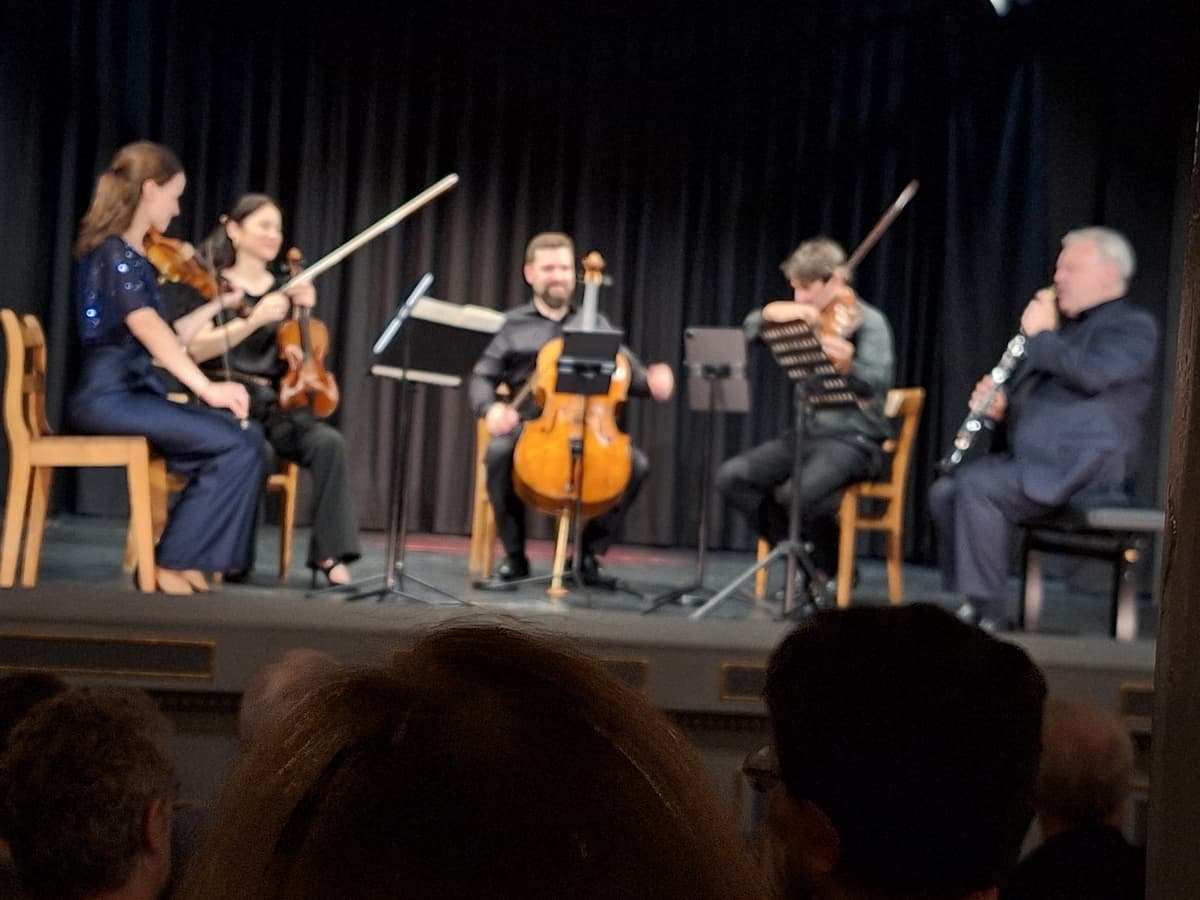
Mozart’s Clarinet Quintet performance
Ever since I started piano lessons at a young age, I have been introduced to Mozart’s compositions in elementary forms – allegros, minuets, rondos, dances, marches, to name a few. These short keyboard pieces were usually characterized by child-like cheerfulness, with predictable and traditionally structured harmonies, rhythms and melodies. As my pianistic skills progressed, I was advanced to his piano sonatas. My piano teacher then was an accomplished pianist, musicologist, as well as educator, so my training was comprehensive and all encompassing. Her approach was to have students sightread through all major composers’ sonatas and analyze each thoroughly, tackling one a week, and at the end of the process, select their favourite ones to study seriously. We inadvertently started with Mozart’s Sonata No. 16 in C, K545 (a staple in the repertoire of most piano students). While the sonata reflected distinctive qualities of Mozart’s music – “beauty and simplicity”, it also exuded immense charm. To this day, I am particularly enamored with the following version:
Piano Sonata No. 16 in C, K 545
Nonetheless, my connection to Mozart’s music during those teenage years was limited to his piano works. Besides the piano sonatas, the list included concertos, fantasies, variations, and piano ensemble works. Up to that point, I had assumed that Mozart’s music was typically classical – composed of pleasant melodies with standard bass accompaniments, display of crystal clear runs, transparent texture, elegance and gracefulness – deeming his music easy to listen to. It was until I furthered my music education to elevated levels, that my horizons were quickly and vastly broadened. That was also when I alluded to the enormous scope of this prolific composer.
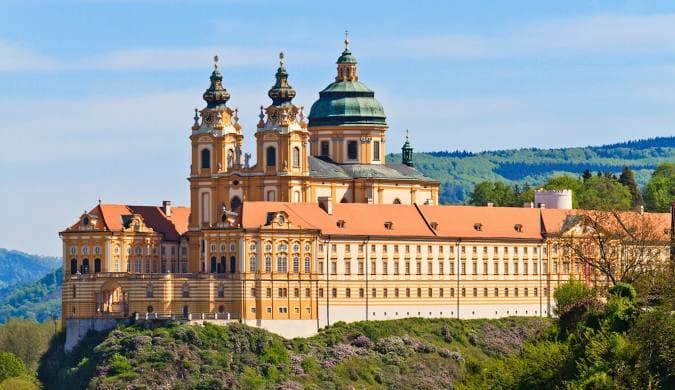
Melk Abbey
After exposure to his symphonies, chamber music, instrumental sonatas and concertos, choral works (primarily religious), vocal music, operas, organ works and serenades etc., culminating in his Requiem in D minor, K.626, I was subsequently convinced that my initial judgment was erroneous, and that Mozart’s music did not just embrace “beauty and simplicity”, but also embodied visceral notions of intensity, agony and human complexity. I began to regard him as one of the most impassioned composers who ever lived, with abundant passionate emotions bursting at the seams, even at a young age, oozing out expressions via a variety of musical forms while always retaining his spontaneous, eloquent and sophisticated style.
My appreciation of Mozart deepened at this Festival. By exploring the countless ways how the performers at this Mozart celebration aptly and diversely interpreted his extensive repertoire, I could justify why he had been lauded as the most influential composer in music history. It is rare for one to possess the gift of juxtaposing pure joy with profound sorrow, intimacy with magnificence, even integrating humour into tragedy. Mozart’s music most probably is the universal language with which audiences across all cultures and backgrounds can share to express their common humanity.
How I enjoyed the “Mozart Festival Along the Danube”:
1) CLARINET QUINTETS
Michael Collins, clarinetist
Minetti Quartet
Stadttheater Grein
This concert was held in an intimate setting – a historic municipality on the banks of the Danube in a modest old theatre with only 126 seats on 2 levels. Seats are upright wooden benches reminiscent of the venues Mozart and his sister performed in.
On the programme were 2 clarinet quintets, the first by Carl Maria Von Weber (1786-1826) and the second by Mozart. Routinely, the clarinetist showcases the warm and sensuous tones of the instrument, while the strings complement with genteel lyricism. However, in this performance, the Viennese quartet adopted a more dazzling approach, which created an intriguing dialogue with the clarinet.
W.A. Mozart (1756 -1791)
Clarinet Quintet in A, K. 581
I. Allegro
II. Larghetto
III. Menuetto
IV. Allegretto con variazioni
2) MOZART SYMPHONIES
Vienna Chamber Orchestra
Wolfgang Redik, conductor and violin
Melk Abbey, Kolomanisaal
Presented in the Benedictine Abbey of Melk, a glorious Baroque structure situated beside the Danube, were 4 orchestral works by Mozart. The Rondo for Violin and Orchestra in C, K.373 and Adagio for Violin and Orchestra in E, K.261 preceded 2 of his most popular symphonies. The magnificence of Mozart’s orchestral renditions was manifested in the “melancholy and turbulent” Symphony No. 40, in tandem with the more “festive and military” Symphony No. 41, “Jupiter”. The latter’s last movement climaxed in an exciting contest between the brass instruments and the timpani. In this venue, where the acoustics were amplified, the trumpet players’ earnestness and the timpanist’s zealousness left the audience rather overwhelmed.
Symphony No. 40 in G minor, K. 550
I. Molto allegro
II. Andante
III. Menuetto. Allegretto
IV. Finale : Allegro assai
Symphony No. 41 in C, K. 551, ‘Jupiter’
IV. Molto allegro
3) ORGAN RECITAL
Johannes Zeinler, organ
Klosterneuberg Abbey Church
Very charming Mozart piece performed in the spectacular church, along with selections by Georg Muffet (1653-1704), Jacob Froberger (1616-1667 ), and J.S. Bach (1685-1750).
W.A. Mozart (1756 -1791)
Andante in F, K.616
4) MOZART’S REAL MUSICAL FATHER
Duo Pleyel, piano duo
Klosterneuburg Abbey, Augustinus Hall
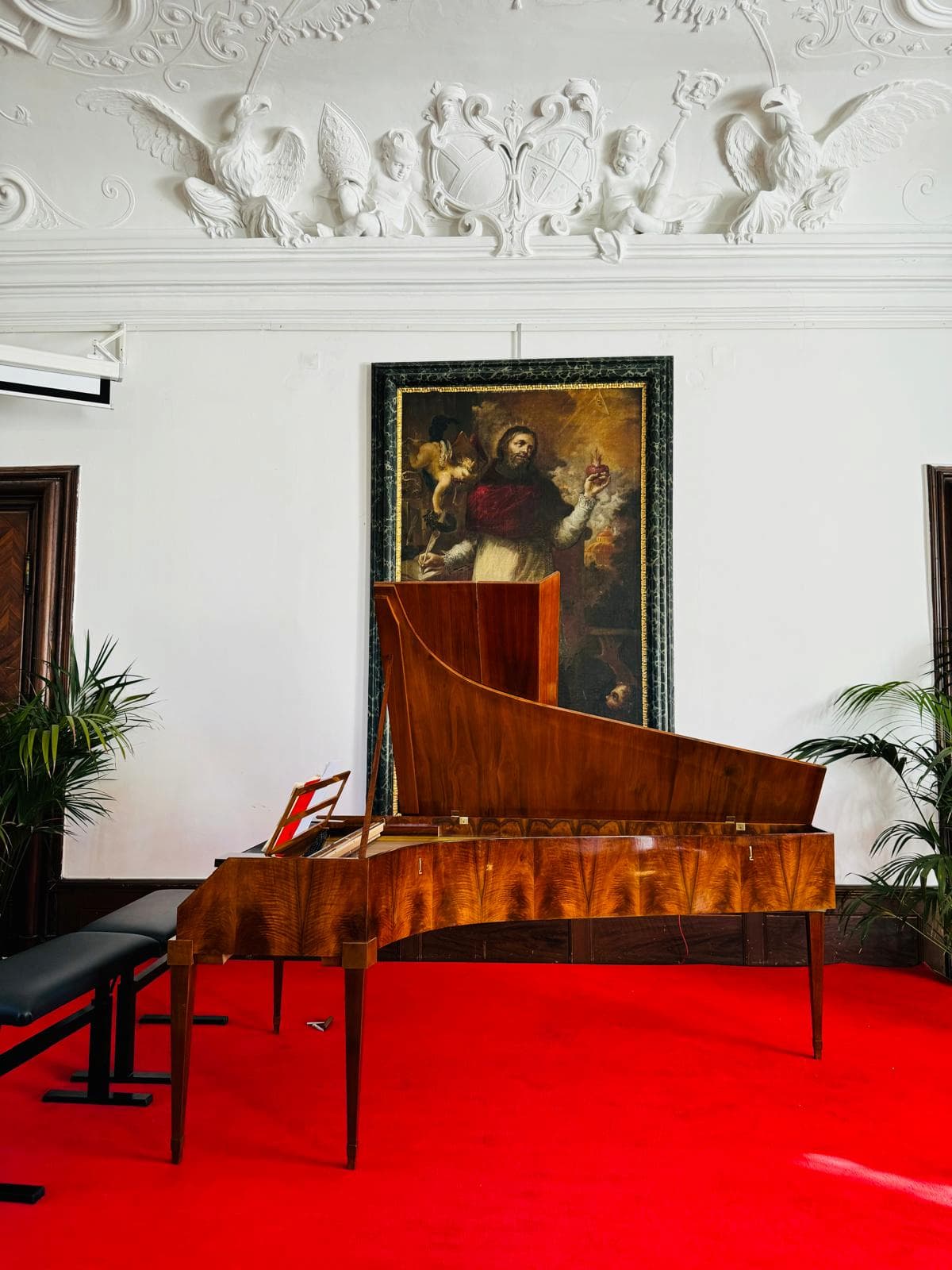
Pleyel Piano
Mozart and his sister Nannerl had been captivating audiences with their keyboard collaboration in their childhood travels around Europe. This “real musical father” title was referred to Johann Christian Bach (1735-1782), the youngest son of Johann Sebastian Bach, whom Mozart befriended and admired since the age of 8. Apparently, Mozart was influenced by his lighthearted and graceful disposition. J.C. Bach’s Sonata for Piano Duet in A, op.18, No.5 was included in this entertaining concert, together with 2 more Mozart Sonatas, Variation, and Andante for piano duet.
Sonata for Piano Duet in D, K. 381
I. Allegro
II. Andante
III. Allegro molto
5) MOZART PIANO SONATAS
Peter Donohoe, piano
Bratislava, Primatial Palace, Mirror Hall
Mozart’s Piano Sonatas are probably in the basic repertoire of all pianists as they encompass most of Mozart’s essential characteristics. His sonatas and concertos are also on the mandatory list in most Piano Competitions nowadays to scrupulously assess the candidates’ innate musical sensitivity. The 3 well-known piano sonatas featured in this concert are No.11 in A, K.331 (alla turca), No.18 in D, K.576 (his last keyboard sonata), and No.6, K.284 (written for fortepiano). The concert concluded with a flamboyant transcription based on a duet from Mozart’s opera, Don Giovanni – Réminiscences de Don Juan de Mozart, S. 418 by Franz Liszt (1811–1886). It is a dizzying display of showmanship in what I consider “ultra difficult but vulgar” technical passages, which are typical of Liszt, but uncomplimentary to Mozart.
Although the soloist, Peter Donohoe, is a prestigious and reputable pianist, I personally do not think he did these compositions justice. It was a straightforward but rushed performance with very little room for meaningful phrasing and breathing. I much prefer the following pianist Mitsuko Uchida’s interpretation :-
Piano Sonata No. 18 in D, K. 576
I. Allegro
II. Adagio
III. Allegretto
6) STRING QUARTETS: LODI, RIDER, DISSONANCE
Quatuor Van Kuijk
Schloss Hof, Festsaal
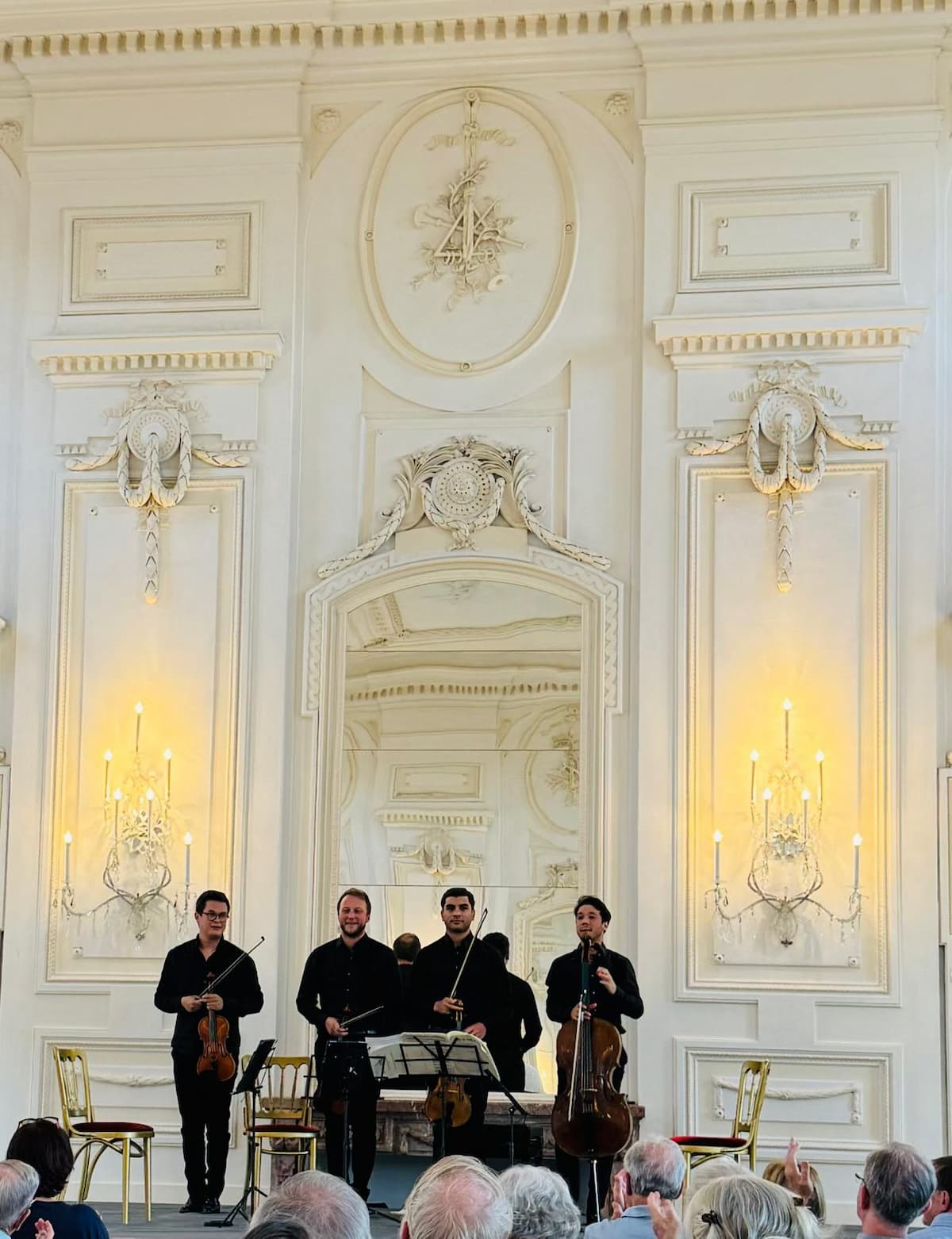
Mozart’s String Quartets performance
This concert was definitely the highlight of the entire Mozart Festival on account of the outstanding quality of the string quartet’s performance. Quote from ‘The Guardian’ explicitly described this quartet’s distinction and charisma:-”Style, energy and a sense of risk. These four young Frenchmen made the music smile.”
Furthermore, the elegant palace setting within a grand hunting lodge, in a most scenic location with lavishly terraced gardens, greatly enhanced the experience.
The concert comprised 3 fascinating quartets:- Mozart’s String Quartet No.1 in G, K.80, (Lodi) – it was completed in Lodi; Haydn’s String Quartet in G minor, Op.74, No.3, Hob.III:74, (Rider), – galloping rhythms of the finale; String Quartet No.19 in C, K.465, (Dissonance) – presence of intense chromaticism and whimsical dissonance throughout the movements.
W.A. Mozart (1756 -1791)
String Quartet No.19 in C, K.465, “Dissonance”
I. Adagio. Allegro
II. Andante cantabile
III. Menuetto. Allegro
IV. Allegro molto
7) THE A–Z OF MOZART OPERA
The Mozartists
Ian Page, director; piano
Vienna, Hofburg, Zeremoniensaal
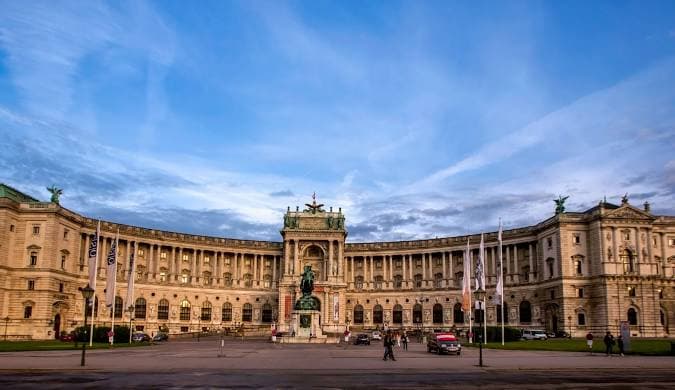
Hofburg, Vienna
The A-Z idea is born out of the coincidence that Mozart’s first opera begins with an “A” (Apollo et Hyacinthus), and his last with a “Z” (Die Zauberflöte). His operas are alleged to be the most popular of his writing, mainly because he is blessed with a profound and compassionate understanding of human nature, which comes through in his operas. The 18 selections in the Festival’s programme are chosen from his many operas, all of which involve tragic subjects like death, sorrow, misery, darkness, bitter pain of parting, trembling, faltering, anxiety, deception and depressing elements.
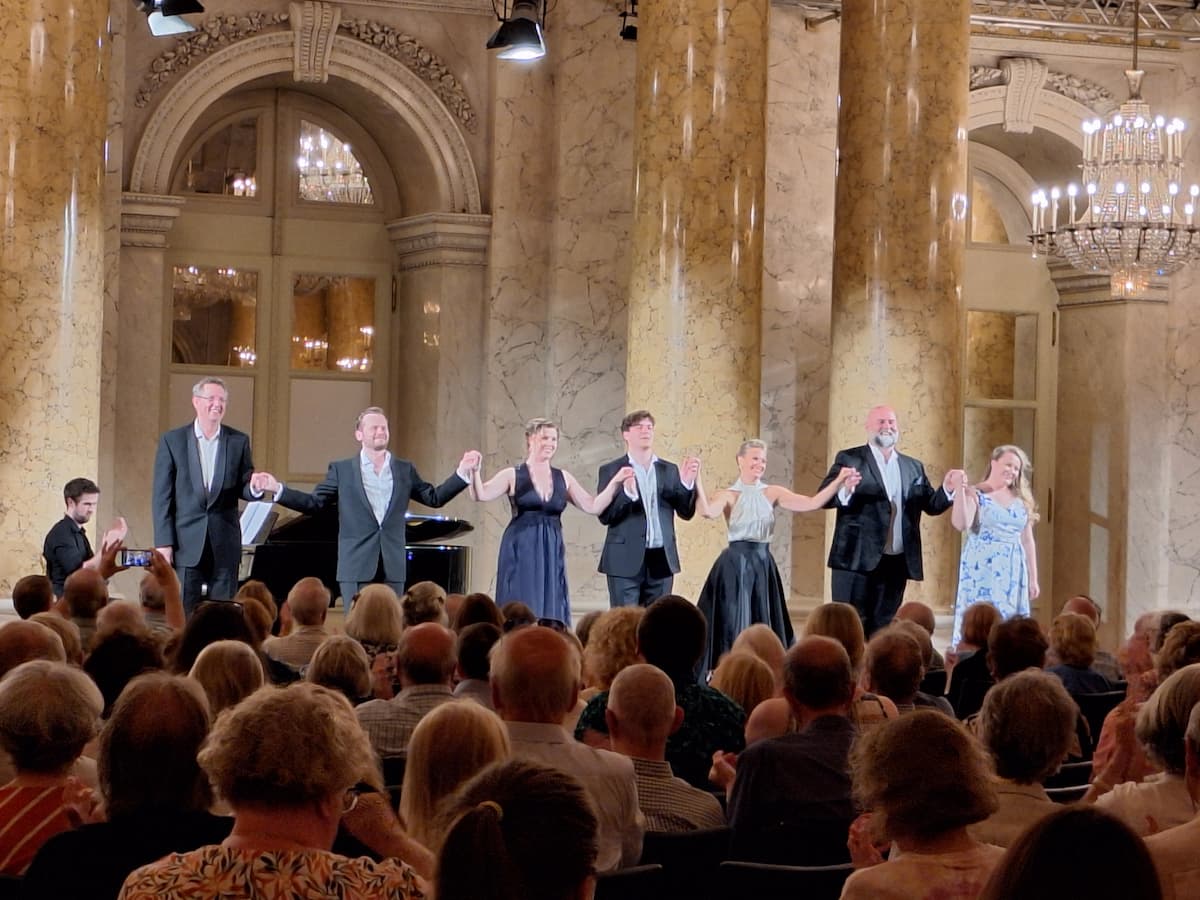
Mozart’s Opera performance
The hall too, is in one of the largest palace complexes in Europe. The actual performance was excellent, and the staging was very professional. Here in his operas, one can catch a glimpse of Mozart’s dynamic, dramatic and dashing self.
“Natus cadit, atque Deus” from Apollo et Hyacinthus, K. 38
“Hm! hm! hm! Hm!” from Die Zauberflöte, K. 620
8) SACRED MOZART
Vienna Chamber Choir
Orchestra 1756
Michael Grohotolsky, conductor
Pilgrimage Church of Maria Taferi
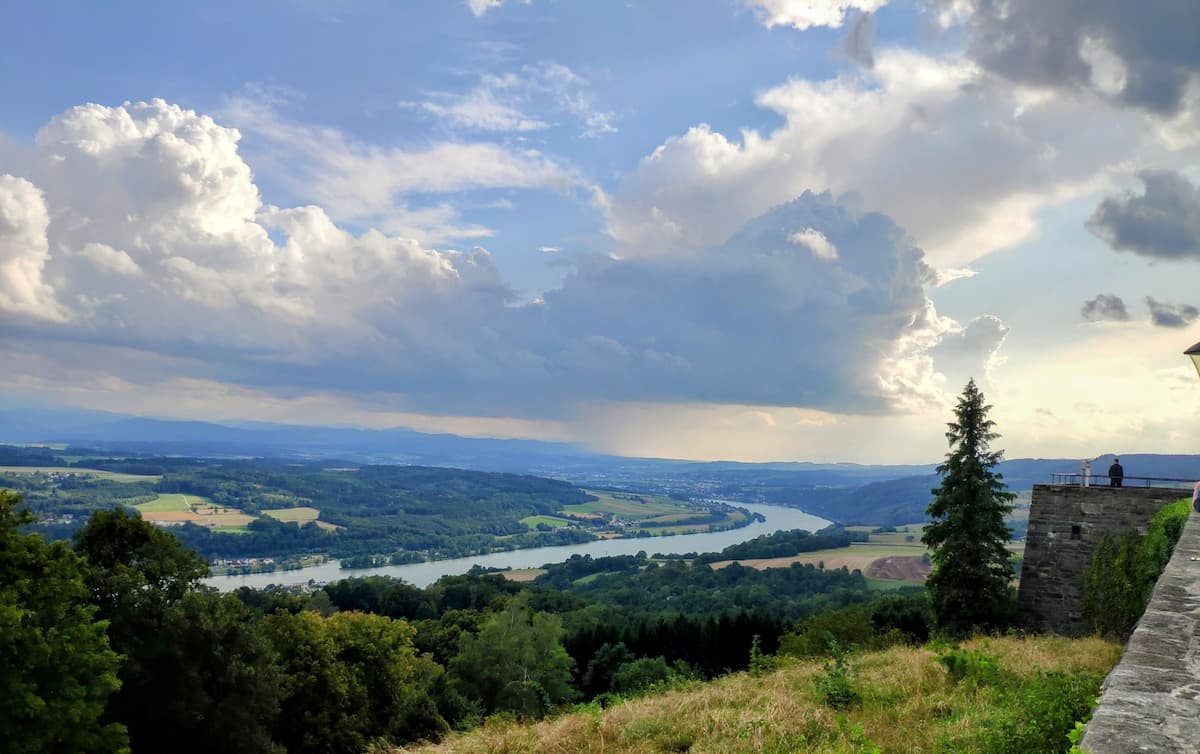
View from Pilgrimage Church of Maria Taferi
On the other side of the coin, the next concert was all about holiness, enchantment, rapture, and sacredness. The Pilgrimage Church is situated majestically above the Danube, with spectacular views all the way to the Alps. The choir’s singing was exceedingly inspirational, spiritual and sublime. The orchestra and organ were magnificent and awe-inspiring. If I were to be converted to Christianity, this concert would have been the catalyst.
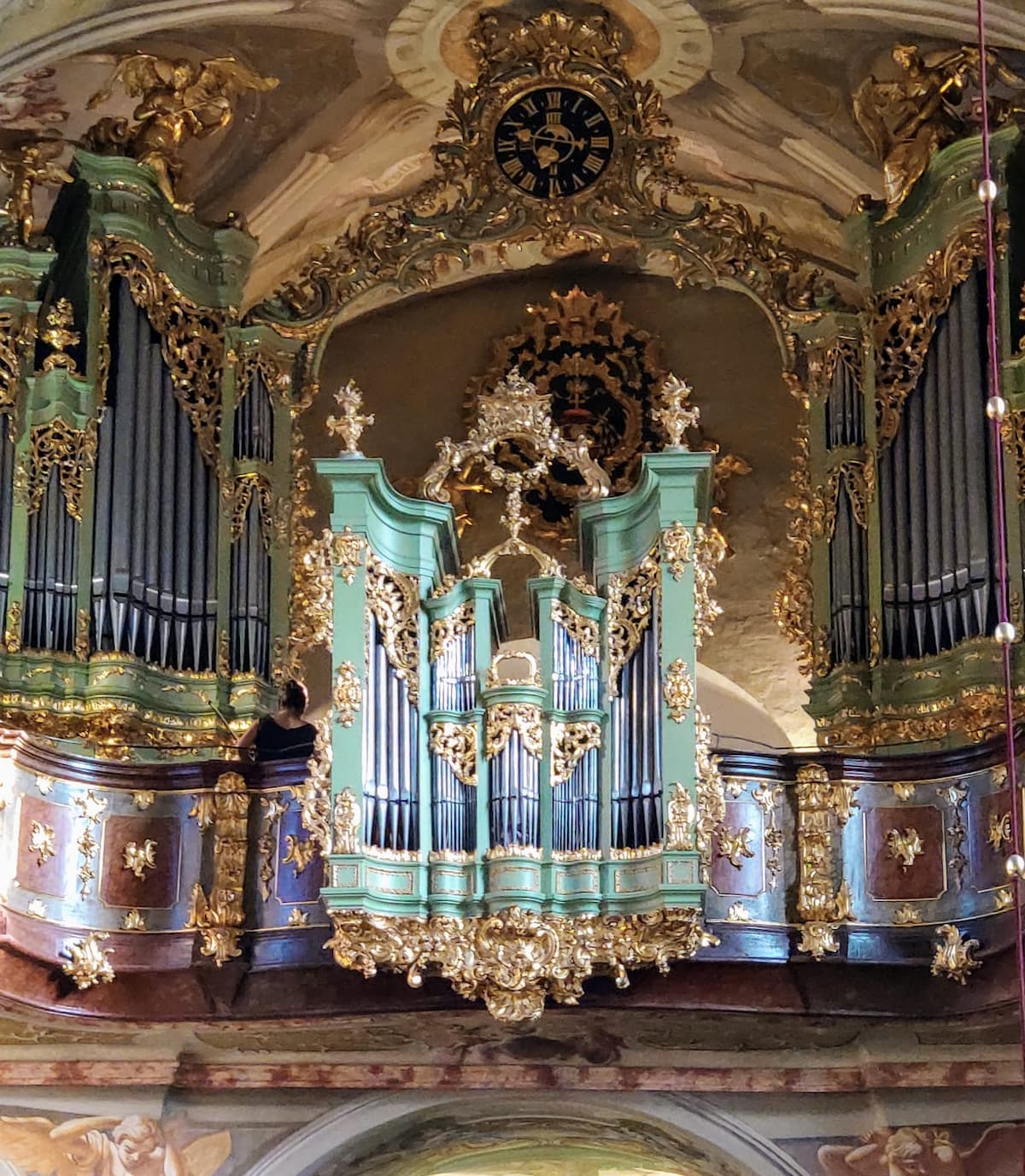
Pilgrimage Church Maria Taferi
This “Sacred Mozart” programme consisted of – Te Deum, K.141 (66b) – a medieval hymn; Venite populi, K. 260 (248a ) – offertory for double chorus; Church Sonata in B-flat, K.212; and the following Vespers cycle. The movement No.5 “Laudate Dominum omnes gentes” featured the most beautiful soprano solo with a most angelic voice that brought the audience as close to heaven as possible.
Vesperae solennes de confessore, K.339
9) FINALE: SERENADES
Akademie für Alte Musik Berlin
St Florian Monastery, Garden Hall

St. Florian Monastery
St. Florian Monastery is one of the finest Early Baroque buildings in Central Europe. Most impressive are its Marble Hall and the elaborate ceiling fresco. Anton Bruckner was a choirboy and organist in the abbey, and upon his death, was buried beneath the organ.
The programme began with wind music scored for pairs of oboes, clarinets, horns and bassoons – “Armonia per un Tempo della Notte in E-flat” by Antonio Salieri (1750-1825), and continued with the same instruments for Serenade No.11 in E-flat, K.375 by Mozart.
Last but not least, 12 wind instruments and double bass congregated to deliver a regal, stately and grand conclusion to the Festival with the following masterpiece:
W.A. Mozart (1756–1791)
Serenade No.10 in B-flat, K.361/370a, “Gran Partita”
For more of the best in classical music, sign up for our E-Newsletter

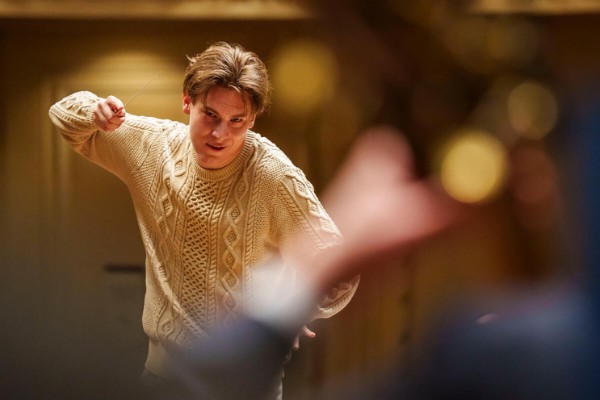
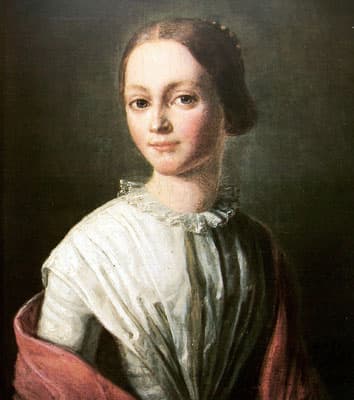
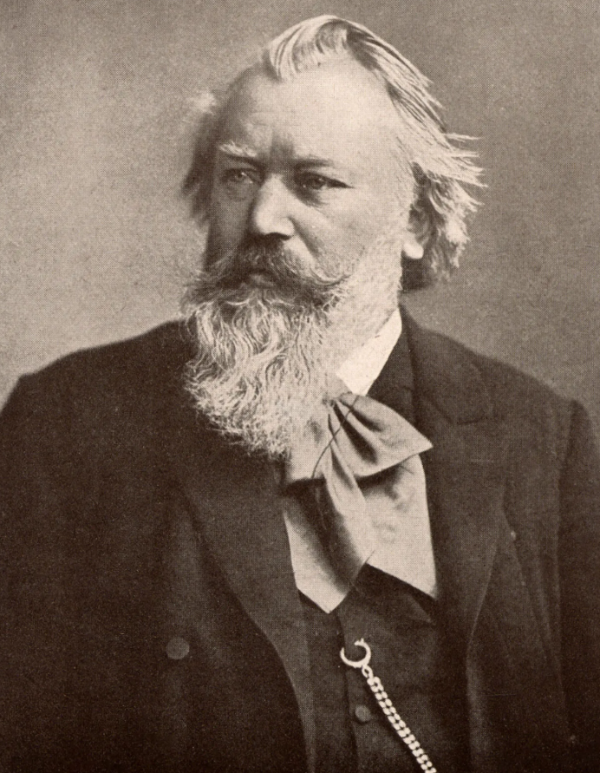
“My first encounter with Mozart’s clarinet quintet K581 was in a depressed moment of my life. Without knowing why, I soon felt that the music seemed to understand all my sorrows and frustrations at the time; I was deeply touched. It was an unforgettable experience beyond words. Years later, I came across the following passage quoted from Robbins Landon’s book – Mozart: The Golden Years:
‘ If there is any one work that sums up this unhappy year (1789 ), this K581 must be it —–parts of it seems to reflect a state of aching despair, but the whole is clothed not in some violent minor key, but in radiant A Major, the music smiles through the tears….”
The music smiles through the tears! “